#the original sentai only had one girl (pink ranger) and the yellow/gold ranger was a guy
Explore tagged Tumblr posts
Photo






WHAT’S IN A NAME - POWER RANGERS CYBERSPACE TEAM
inspired by @squirrelstone (x)
TAGLIST
@seize-the-droid @anotherunreadblog @ocfairygodmother @kazinejghafa @eddysocs @foxesandmagic @seymours-secret @witchofinterest @akabluekat @booty-boggins @anna-phora @starcrossedjedis @bravelittleflower @jewelswrites-ish @ryutabas @thecaillic @fuckitup-in-style
#ocappreciation#ocapp#ochub#queerocs#powerrangerocs#power rangers oc#story: cyberspace#this is based on a chinese sentai and it shows#the original sentai only had one girl (pink ranger) and the yellow/gold ranger was a guy#i genderswapped him bc i could and also bc the team is just dicks all the way down#also i emphasised the video game sub theme that the group kinda had in the original show? making both red & yellow esports people#this is to make up for not making citrine an e-sports guy like tametomo :')
5 notes
·
View notes
Text
Kisekae Insights #26: The Superhero Project Prelude (a preview of things to come)
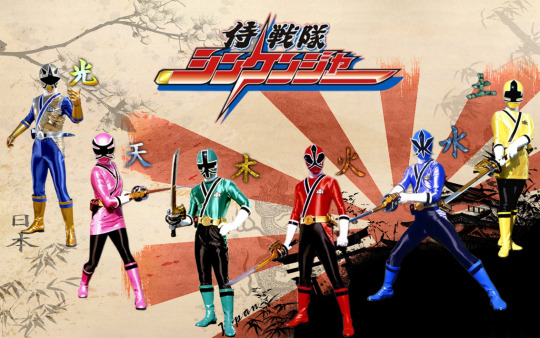
(Art by blakehunter)
My journey into tokusatsu began in 2013 when I watched Power Rangers Samurai on television and was enthralled at the use of kanji in the series. This led me to learn about Super Sentai through watching its counterpart, Samurai Sentai Shinkenger. Later, I began to learn about Kamen Rider through watching Decade thanks to its crossover arc with Shinkenger, which would lead me to watch other Super Sentai and Kamen Rider series. Eventually, I also learnt about Metal Heroes through watching crossover movies and Ultramen after watching some episodes of Orb online out of curiosity (Ultraman was on TVB through satellite back in the day, though I never really cared for it).
While the adaptations of Super Sentai and Kamen Rider in Gokaiger and Decade were among the initial elements teased and hyped for the Moushouden Series, it should be noted that they had their roots in previous series. In the final instalment of the second run of Kisekae Insights, allow me to walk you through how I implemented Super Sentai before 2018 and give you all a little bit of a preview of what is to come.
Samurai Mode: The prototype powers
The second half of Series 9 in 2014 featured the Doctor and his companions becoming beta testers for the Superhero Project in the form of Samurai Mode. The arsenal of Shinkenger was adapted, but the names were kept close to their adaptation counterparts, with the exception of the core rangers’ morphers, which are named the ShodoPhones. The Samurai Morpher and the Gold Ranger’s powers were the first to be developed for alpha testing; their tester, Hiroki’s assistant who was also one of his “triad” comrades, would go on to become ShinkenGold when the Superhero Project was launched. Akari had also managed to get her hands on a ShodoPhone as well, presumably having been stolen from UNIT.
Red Samurai Ranger: Hiroki Ichigo
Blue Samurai Ranger: Momoka Mizutani
Pink Samurai Ranger: Angelina Mouseling
Green Samurai Ranger: The Doctor
Yellow Samurai Ranger: Satoyuki Saitō
Gold Samurai Ranger: Hiroki’s assistant
Female Red Samurai Ranger: Akari Ichigo
Samurai Mode was first used by the Doctor and his companions on Destination One, but unlike in Shinkenger, they weren’t fighting demons or monsters; they were fighting Girl Power and their allies. Following that adventure, the Doctor passed his ShodoPhone on to Storm Dasher, who used it when he fought Lord Tirek alongside Twilight Sparkle on Equestria. Dasher did not transform into the Green Samurai Ranger, but he did temporarily transform into an alicorn – an unintentional foreshadowing of things to come in the Moushouden Series. Dasher gave his ShodoPhone back to the Doctor at the end of the episode.
As for the other five, they went on to fight at Sekigahara, Osaka and Kyoto (Honnōji and Nijō Castle), though they never used their Samurai Mode powers at Sekigahara. The Doctor would rejoin them when they fought the final battle in Yokohama as he had been on Trenzalore during the events of the Series 9 finale.
The year after, I wrote a “director’s cut” version of the arc which is basically just a remake but with the Samurai Mode powers given more prominence than they did during the series while also toning down on influences from Dynasty Warriors, Samurai Warriors and Final Fantasy. I also used Mega Mode outside of a Megazord setting (instead of it being a combination of power-ups) and featured Megazord finishers on human-sized opponents with the Mega Blade. Because the events of the director’s cut version are different to the original episodes, I consider them to be non-canon.
The road of the Xtreme Legend
Before Gokaiger and Decade premiered, a set of prelude stories were made for Series 10 and 11 in 2017; to complement the BBC Series 8 and 9 having 12 episodes each, I write a total of four episodes – one to replace Deep Breath (titled The Advent of the Doctor), two extra original episodes (one for each series) and an original Christmas Special (titled Dawn of the Space Pirates).
After Girl Power’s defeat, everyone began focusing on their high school studies. By 2016, the first wave of UNIT’s Superhero Project teams were launched; alongside the new Shinkengers led by Akari that replaced the beta testing team, the Gekirangers, Go-Ongers, Goseigers and Zyuohgers were formed as well. The five teams got into a conflict with the Doctor, Hiroki and his assistant while they were investigating a conspiracy involving the Clockwork Droids harvesting organs from students who had committed suicide over their studies and a company giving students unfair advantages in their studies (through cheating).
The year after everyone graduated high school (2017), Hiroki, Akari and Narutaki discover the return of Kawakara, the lost city of Akari’s grandfather, Antoni. Later that year, Narutaki went missing after she and Hiroki were freed from the possession of Evil Death (the Grim Reaper, not to be mistaken for Good Death based on the character played by Simon Farnaby in Horrible Histories) and her role as ShinkenBlue was replaced by another member of Girl Power. Around the same time, Takumi Kamijō and his team at Torchwood Pleiades became the Magirangers after testing a prototype system during the Superhero Project’s beta testing phase.
That Christmas, Hiroki encountered a demon named Suira, also named Sui after the demon in Chinese folklore that explained the origin of money in red pockets. Suira transformed Hiroki into Gyūki after having done so 17 years earlier in an effort to help him get revenge on his parents after being sent to time out. Meanwhile, the Doctor began gathering up the Gokaigers in response to the Zangyack Armada’s vanguard fleet attacking cities. They fought Shikabanen before they help the other Rangers fight Suira, who had transformed into a demonic orge named Dokkaebi (based in Korean folklore) and later combined with Gyūki and Nian (the Chinese New Year Monster) to become the Krlunk Smasher. Although the Rangers defeat the Krlunk Smasher, he grows giant and the Gokaigers form the Legendary Megazord to defeat it.
From the Doctor’s point of view, the 2017 Christmas Special and the events of Gokaiger take place between Series 11 and 12 – after Hell Bent but before The Husbands of River Song and the episodes featuring Nardole, which are collectively known as the Nardole Saga.
A look at the first wave teams
So in summary, the first wave of Superhero Project teams shown in the preludes to Gokaiger and Decade are the Magirangers, Gekirangers, Go-Ongers, Shinkengers, Goseigers, Gokaigers and Zyuohgers. For the most part, the names of their arsenal are derived from their original Super Sentai series, but there are a couple of exceptions; the Shinkengers’ arsenal uses the names from Power Rangers Samurai (as stated earlier) while the Gokaigers’ Zords and Megazord combinations uses names derived from Power Rangers Super Megaforce.
Very few teams had Megazords in Gokaiger due to time constraints; in fact, the only teams that have Megazords featured (aside from the Gokaigers) are those that have a button on their morphers to summon or combine their Zords. Out of the teams in the first wave, the Zyuohgers are in this category, though Cyber Knight and the Gosei Ground Megazord would appear mid-way into Gokaiger.
Speaking of the Shinkengers, what happened to the beta testers for the Superhero Project? Hiroki would go on to become Kamen Rider Decade; Hiroki’s assistant would retain his equipment and become ShinkenGold; the Doctor and Angelina would become part of the Gokaigers; and Momoka and Satoyuki would resign. The ShodoPhones were handed back to UNIT and four of the new Shinkengers received the Samuraizers (from Samurai) as their morphers; Akari retained her ShodoPhone when she became the official ShinkenRed.
Power-ups for the Shinkengers and Goseigers were also introduced; the Black Box and Shark Disc were introduced in Series 9, while the Super Goseigers were introduced in the 2017 Christmas Special.
And that’s all I’m going to tease for the third run of Kisekae Insights. As I stated in the last instalment, this is going to be final instalment of the second run as I want to focus on other things, including the Doctor Who Series 13 reviews and finishing off my personal project. I don’t know when I’ll begin work on the third run, but right now, I’m currently dreading the time until then because of various things, particularly in regards to current affairs.
Kisekae Insights will return, but be warned that things might not be the same. I leave you with my take on an English version of the Shinkenger opening song that I wrote in 2018 after being inspired by Psychic Lover’s take on it. For the most part it’s the same, but I modified the lyrics to fit with the tone of the Shinkenger arc in Series 9.
That’s it again from me. Don’t forget to follow me on Facebook and Tumblr to see more of my posts.
Samurai Sentai Shinkenger English Lyrics (modified by me)
Original lyrics here
Dance! Dance! Get up! Fight together! Chop! Chop! Take down Girl Power! Samurai Sentai Shinkenger Forever! Year upon year it goes This Time War never ends Humans, Time Lords and Daleks are fighting again So we are serious And we are dangerous When we see your weaknesses Your future is over! Let the words light up the sky The elements make us strong! These heroes are makin’ noise They’re fighting for us all! Swords clash, gunshots blazing loud Go Go Samurai Power Rangers! Just do it! Fight for time and for our universe! Don’t! Don’t give up! Don't be afraid We say ‘Banzai’ in the end When Rangers get together, it’s Samurai forever! That’s ‘Bushido’ Hey bring it on! Samurai Sentai Shinkenger Forever! What are we fighting for? Harmony or discord? We indeed fight for peace To understand your drive When we get serious Regrets are part of us We practice so we can fight with no more regrets! Let the words light up the sky The elements make us strong! These heroes are makin’ noise They’re fighting for us all! Flowers blossom, moon sun storm Go Go Samurai Power Rangers! Just do it! Fight for those who really believe in you! Fighting, dancing, shining, dreaming For our future, don’t be afraid! When we combine our powers We will not be beaten! That's 'Bushido' Cut with the sword! Samurai Sentai Shinkenger We are dreaming of the day when the world will be at peace If you don’t wanna understand, then we will take you down! Dance! Dance! Get up! Fight together! Chop! Chop! Take down Girl Power! Our love and courage is what powers our swords! Dance! Dance! Go Go Samurai! Chop! Chop! Go Go Power Rangers! Altogether we will break the darkness of the world That's 'Bushido' Hey bring it on! Samurai Sentai Shinkenger Forever!
4 notes
·
View notes
Text
Halloween 2019 costume ideas: Power Rangers pt. 2

Jason Bischoff’s Beast Morpher Rangers
Jason Bischoff was the former global marketing guy for Hasbro and is an artist.
He is a genuine fan of tokusatsu (mentioned Kamen Rider on his Twitter and his love of Ex-Aid and several Heisei Rider shows) and it shows. In his final months with Hasbro, he and a buddy of his named Micheal O’ Hare came up with art for concepts of new Rangers not original to the Go-Busters source material.
The first is a Green Ranger based on the Frog Buddyroid from the Go-Busters Summer Film, “what if she had a Ranger companion”? The next is a gray Polar Bear Ranger and an Orange female scorpion Ranger based on Jason’s viewings of Kyuranger and Sasori Orange.
A Bat Ranger based on Blaze, a “what if the bad guy reformed and got a new suit” kind of thing. (though given its Batman’s 80th, you could also use it as an excuse to go around saying in a gravely voice “I’m Bat-Ranger!”)
Lastly, a Magenta Sea Urchin Ranger and Hammerhead Beast Bot for you and a buddy to dress up as.
X-Men/Power Rangers Amalgam
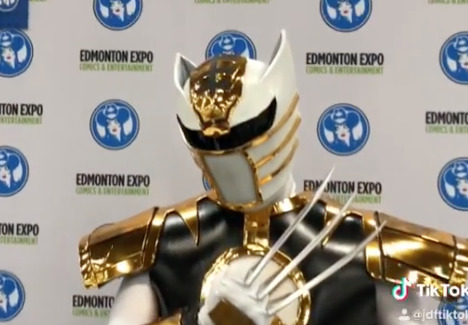
A while ago at the Edmonton Expo in Alberta, Canada, Jason David Frank discovered a cosplay that had to be seen to be believed. A Canadian fan mixed the White Ranger with Wolverine. Mr. JDF then posted this to instagram
Now, this isn’t the first time that X-Men and Power Rangers have crossed paths as both shared the Fox Kids block on Saturday Mornings in the 1990s and a SDCC gatefold variant cover paid tribute to X-Men #1. Not to mention MMPR’s comic rights were once with Marvel and the whole Marvel/Super Sentai connection. The idea of X-Men Rangers is an interesting one, why not complete it?
Cyclops Red, Jubilee Yellow, Beast Blue, Pink Phoenix (if considering season 2 MMPR), Gambit Black and Rouge Green. As an alternative to Wolvie, Storm can be the White Ranger or added as the 7th Ranger team member of any color you choose. Add a Professor Z (a tube head in a hover wheelchair or a blue bald guy) and you have the complete set! Or go wild and make a Brotherhood of Mutants version of a Ranger Team!
Lord “Zackkon”

Submitted for your approval, one Zachary Taylor, a virtuous teen who was offered a deal with the devil to be something greater, but refused. What if the youth, resentful of the choice of his team’s leadership, accepted the path that Rita Repulsa offered?
I envision a Black Ranger who fuses his power first with the Dragon Coin, but then with powers of Green and Black Rangers after him. The core idea is to combine the Mastodon motif with a Dragon in a way that aesthetically looks good.
Remi, the Orange Solar Ranger

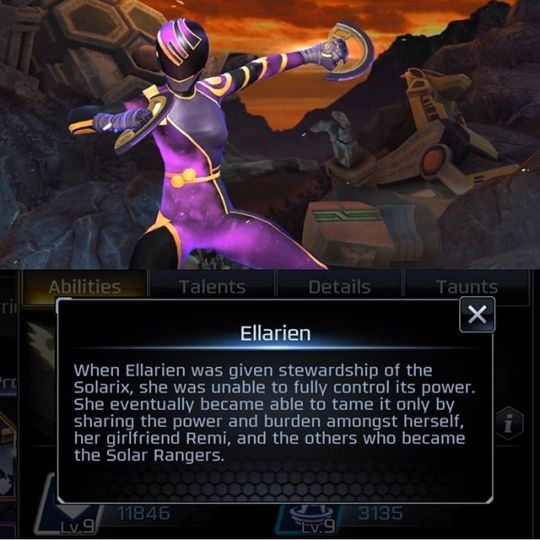
(Ari’s Legacy Wars Bio confirms it!)
Last year, I pitched to the fandom to option dressing up as newest kid on the block, Ari aka the (Purple) Solar Ranger. This year, I’m submitting her life partner and love Remi who became the most recent addition to the Solar Rangers and another of a growing number of representatives of LGBTQ+ heroes. For those looking to cosplay with the person they love or for a fun cosmic night of Halloween, here is a Ranger couple that we hope to see more of in the future.
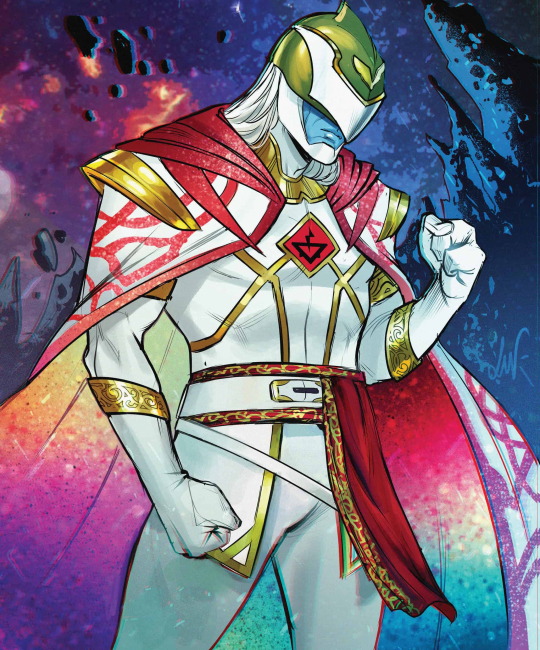
A Morphing Master
The Morphing Masters are the mysterious all powerful beings who protected the Morphin Grid and dedicated their lives to studying it. The Boom! Studios comics dedicated some time to explaining them a bit more in Beyond the Grid, including a new look.
Why be a mere three dimensional linear being on All Hallow’s Eve or at a con when you can wear a look that says “I am a supreme being beyond your trivialities and I look fabulous doing it.”

Warbunny
Aka my new favorite Power Rangers monster. Warbunny is a ‘roided up anthropomorphic rabbit whom, if his Conan inspired garb hasn’t telegraphed, talks like a certain former Governator and wields a large Warhammer that fires energy blasts. Cosplayers who do Warcraft costumes and other fantasy cosplay might gravitate towards this one since it parodies Arnie and Conan.

The Soul Era MMPR Rangers
In the comics, we learn there was a ill fated team in 1969 which fought Psycho Green. Pitch: What if there were a MMPR Rangers team 5 years later in 1975, the year Gorenger was created? The era of disco and soul, big cars, afro hair kung fu movies and Watergate. The challenge I present is combining the Gorenger suits with the MMPR suits.
Disco collar capes, platform heel variants of the boots, flashy brighter neon colors with glitter and woodgrain on the weapons because products in the 1970s had woodgrain even if it didn’t make any aesthetic sense to do so. Civilian forms would be based on 1970s fashion, at least one Ranger should have a real or fake Burt Reynolds-sized mustache and/or afro for period accuracy.
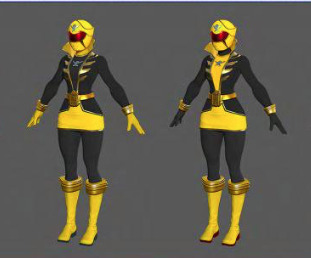
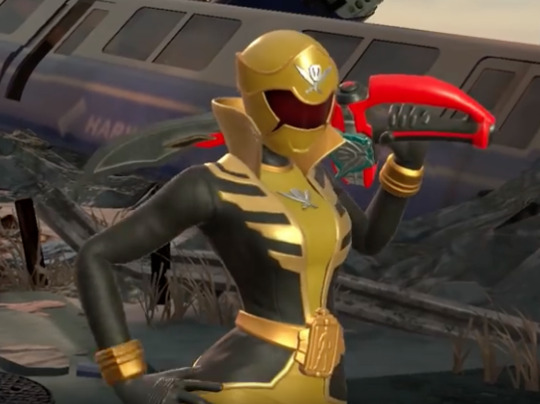
Dark Super Megaforce Yellow
For Ranger fans who wanna let out their inner bad girl, I present another Dark Ranger redesign of a Power Ranger from Battle For the Grid. The Gokaiger suit decked out in black and pants and a gold trim “coat” is just so good, really makes the yellow pop and looks more “piratey” than the standard suit. As you can see you can opt for an all black undershirt and yellow gloves or vice versa.
A new standard Lord Drakkon created for evil Rangers is that unlike their heroic counterparts, all of them have blood red visors instead of the standard black tint. (This also recently extends to Sentai, but we’ll get to that later.)
Houou Ranger (Chun-Li ver.)
While Ryu got to play Power Ranger, the devs of Legacy Wars decided to let none of the other characters participate in the fun. Many fans who love and respect Chun-Li were naturally outraged that she got shafted and began speculating what kind of Blue Ranger she would be. There was artistic debate as to what motif she would have with most gravitating towards a tiger, a peacock or her totem of fighting style, the crane.
I on the other hand think if Ryu lifted a Dairanger’s name for his Ranger form, it only makes sense the developers would do the same for Chun Li and give her a Chinese Phoenix motif.
The common consensus all fans share is that such a form has parts of Miss Li’s costume as part of her Ranger outfit much like with Ryu Ranger with his boxing gloves, bandanna and black belt. Whatever you choose, you are sure to be a knockout!

Supersonic Green
The first Green gone bad chronologically in the comics, Trek was a bitter Xybiran who got sick of being benched while his team went on missions and soon that bitterness turned into hate as he empathically read the feelings of his teammates about him. He murdered his entire team and then pledged allegiance to Dark Specter to become Psycho Green.
The Fiveman team these Supersonic Rangers are based on never had a sixth ranger, since sixth Rangers were not really a thing until Zyuranger. This bring up one conundrum for this Ranger in terms of those wishing to design a full costume...what exactly is Trek’s helmet motif?
For those who have never seen Fiveman, the theme was about types of school education each Ranger was part of. Red was a science teacher, Blue was a physical education teacher, Black was a language teacher, Pink was a math teacher and Yellow was a music teacher.
I suppose a history book on the helmet for social studies would be appropriate as would be an apple or money symbols for home economics. It should be noted if one commits to making a helmet, the Fiveman/Supersonic Ranger helmet visors each have lines running through them to signify their numerical designation (Red has 1, Blue has 2 etc.) so Green would have six.
That’s all I’ve got!
Happy Halloween Ranger Nation!
33 notes
·
View notes
Text
Ex-Aid review: Choh Superhero Taisen
Ex-Aid's spring movie, from a distance, just looked like the familiar Rider/Sentai crossover format doing its usual thing. But recently, a producer at Toei has confirmed that they will no longer be doing crossover movies in the spring, meaning that Ex-Aid - turns out - has given us our final "so-called spring movie" experience.
In this world where weird and questionably written crossovers may cease to exist, let's see if it at least went out with something akin to a bang.

Choh Superhero Taisen is a bit of a silly name. I mean, it implies this is a SUPER version of the usual spring movie crossover, but to be a little more accurate, this movie is... kind of like a better version of the first couple swings they took at the Rider VS Sentai angle.
To recap, we got a Fourze-era crossover that did not really give a good first impression, then a Wizard-era crossover I can't remember a single thing about except Space Shocker. Gaim and Drive went the route of Rider VS Rider, both in kinda interesting but shaky executions, and Ghost had a focus on the original Kamen Rider making a modern day appearance.
Oh and just to quickly establish the timeline here, Maximum Gamer premiered in the show and Kuroto got what he deserved. Bit of a shame since I’m sure he’d have a lot to say about the kid in this movie. Anyway, let's begin!

The movies opens up in Korea being attacked by the game Xevious. The Kyurangers send all of their attack stock footage at the invaders, which you would think the Cyber Rescue Center would know about but they are instead dealing with a strange patient who apparently has a tail. Oh hey, Zyuoh Tiger!
The way the movie plays out beyond this point is really weird. It feels like when Inoue wrote the OOO portion of Movie Taisen Core - things are oddly slow and somber for a series known for being bright and peppy.
It’s uncanny. Hiro literally proclaims he will operate on Zyuoh Tiger even if she's an animal and no one bats an eye at that comment. That’s how weird it is. And when they see the Kyuranger mech land in the middle of the city, it’s treated as a quiet ominous moment like something bad is about to go down.
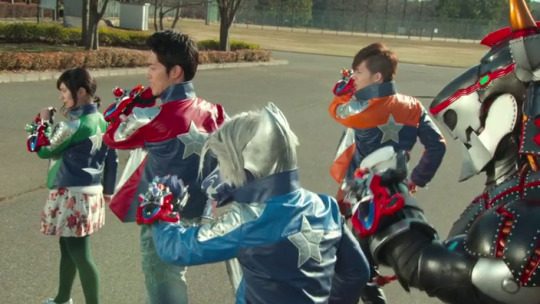
Okay, to be fair, that part is ominous because the Kyurangers are here for Poppy since they think this video game character is linked to other video games attacking reality - I guess since they have a lot of research at their disposal, because they know what Bugsters are!
But just as the Ex-Aid VS Kyuranger stuff begins, it quickly ends once Shishi Red... decides Kamen Riders are heroes because there's a game called Choh Superhero Taisen that Riders and Rangers are both part of. I mean, he's not wrong?
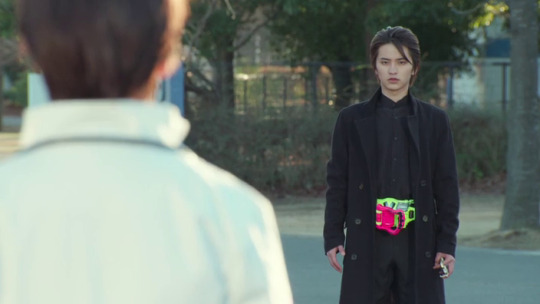
So yeah, that's a thing! Choh Superhero Taisen is a game that’s invaded this world and challenges Ex-Aid. Among its returning Riders/Rangers is an alternate version of Hiro, transforming into Kamen Rider True Brave.
I was VERY interested in learning the backstory of this character - is it an alternate universe thing, or what? Turns out, he's a video game character... and for story reasons, it’s a Hiro who took a different path in life.
It sorta makes sense, I promise.

Things get interesting once Ex-Aid and Poppy enter the world of Choh Superhero Taisen, which is more or less a bunch of Toei's usual filming locations but with returning actors accompanying them!
The first being Kyoryu Gold from Kyoryuger, Utsusemimaru - or Utchy for short. I watched at least half of Kyoryuger so I can appreciate his cameo. He does his Brave Daze thing and he gets some good action.
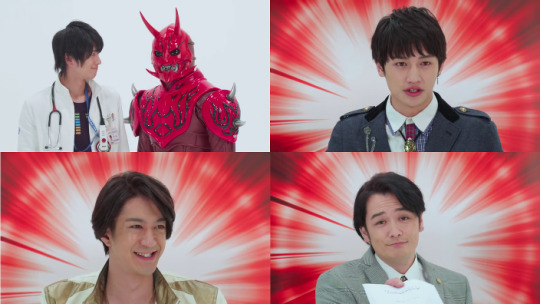
More importantly, you can't have a bunch of returning actors without Toei proving they can somehow keep getting all of the Imagin from Den-O. And I can understand someone being sick of them by now, even if you were a fan before, but the scene where Ex-Aid has to pick his team makes me smile. Although... considering ToQGer's premise, should Urataros really be flirting with one of the girls?
MOVING SWIFTLY ALONG, Emu chooses a "Gorider" team, with Momotaros being Pink - it's a pun. Ex-Aid uses Robot Action Gamer to cheat his way into the Red slot, which I kinda wish someone called him out on.
Ao Ninger makes an easy return as Blue, providing a nice callback to Ninninger as he basically takes charge and tell's Emu to pick his master, Magi Yellow, who taught him magic - but ends up calling Beet Buster from Go-Busters instead, because same actor. That was cute.
Lastly, filling out the team’s Green slot, the out-of-nowhere return of Zolda from Ryuki! I... y'know, it's best they didn't address his cancer since this is supposed to be the "game world" Zolda. Instead, they lean into his lawyer-ness - it felt very appropriate for him to dismiss the Gorider thing and only take part if they signed a contract. I also enjoy how he keeps referring to Momotaros as Goro-chan. It’s cute. I don’t have the heart to tell him Goro is in Zawame.
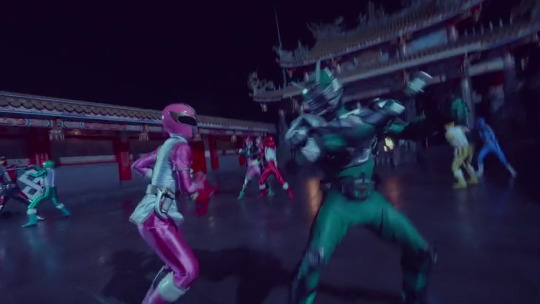
With a team decided upon, this starts to feel like an entirely different movie with Riders VS Rangers. My only gripe here was I could've used at least one more fight. You get a nice tournament chart that shows you all of the different fights happening offscreen, and to be quite honest I needed to see the Dandy team in action.

Right, so I should talk about the kid now. There's a patient Hiro was responsible for, who made the Choh Superhero Taisen game and disappeared afterwards. This is where things get interesting because Hiro has this logic of "I won't perform surgery on a patient unless they want it", which was used well in the show. Hiro presented the kid a chance to be cured, and he said no, so Hiro reluctantly accepted the kid’s choice.
Essentially, Alternate Hiro was made in this kid's game world as a personification of Hiro's guilt, and acts as his aide. It kind of works. But it kind of doesn't? Which is really a good way to describe spring movies as a whole.
However, I dig the alternate Hiro in concept. He isn't an evil version of the character like you'd expect - he has some sense of justice to him, he's protecting this kid after all, it's just that he's wrong in the eyes of the actual Hiro because it conflicts with his own ethics. This may be the best part of the movie, or at least the part with the most depth.
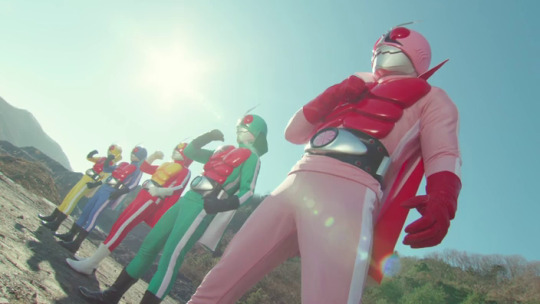
Oh right, so Ex-Aid and the others on his team become Kamen Sentai Gorider... which is a combination of the original Sentai and the original Kamen Rider... and it's about out of place as it sounds.
It feels right at home with all this chaos, I guess. But I don't have much to say about it beyond that. I still gotta watch the actual Gorider special.
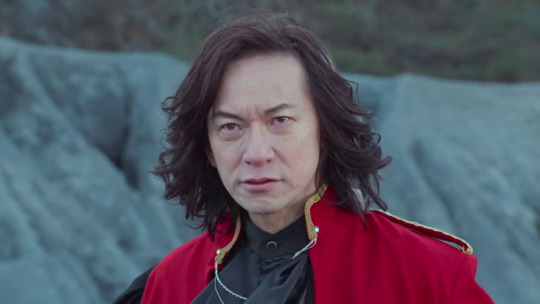
Not a shocker for something to feel out of place in one of these movies. You know what’s also out of place? Shocker! Yes, the original villains are back again, and this time-- they don't have a different name, but I'd like to call them Game Shocker, because it implies they're living on in yet another form.
They also have a new young leader, Shocker Leader III to be exact, which I was admittedly interested in learning more about. The actor made a big deal about how he thinks of Shocker as a group that admires the Kamen Riders, quoted saying "I want you to understand Shocker's feelings".
In all honesty, though, the character doesn't stand out to me as being any different than a generic Rider movie villain, and would have probably been better off in a different movie. A shame too, because I love the idea it sounded like he was hinting at.
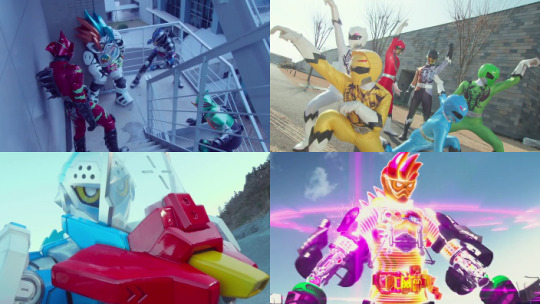
The movie is all over the place, and there's some things I wanna talk about but feel like I don't need to dedicate a whole screencap to. Let's go through these real quick...
Among the many cameos, we get the Kamen Rider Amazons crew, which includes Alpha, Omega and the then-new Neo! I haven't seen Amazons and this cameo taught me... they fight aggressively. I’ll be honest, I really felt nothing from this cameo. But I can appreciate how they added the dramatic lighting Amazons is known for. And Ex-Aid cleverly added some game logic to the fight by looking for a hidden power-up. He probably connects all of the pork chops in Castlevania.
The Zyuohgers make a cameo! That's pretty fun considering this is one show later. Unfortunately this cameo also made me realize Amu really did not have much to do with the story. I legit forgot about her while writing all this.
Brave uses Galaxian Quest Gamer, which wins the award for most pointless and rushed movie form debut. Like, I think he put on the armor and fought some dudes real quick and you never see it again. Galaxian played some part in the game world destruction earlier, but now that I think about it, you could replace that with Shocker to make them fit in better...
To end on a positive note, Ex-Aid uses a special giant Energy Item with Maximum Gamer to grow to Sentai mech size and fight alongside the Kyurangers' mech, which was a very fun visual since it involved a unique transformation in which Ex-Aid grows in size as the armor builds around him. This felt like a "They knew this was cool and wanted to take it a step further" moment.
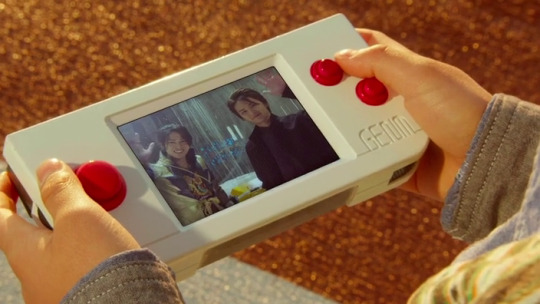
Since I sped through all of that, let's get to the ending.
There's a nice moment with the kid and Naga from the Kyurangers, as they both share the inability to properly express emotions, and I can appreciate how they made use of Naga even if I have little exposure to Kyuranger - that was nice and heartfelt.
Through a combination of Ex-Aid's previous efforts and Brave's current efforts (pretty cool having both of them involved there), the kid is saved, everyone who got sucked into the game world is back out, and the status quo returns to normal.
The credits roll with a nice collection of cards based on all the characters in the movie.
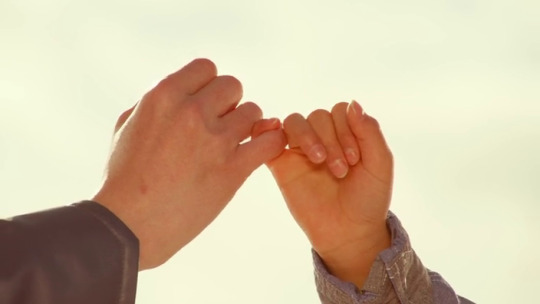
So how did this one turn out? Well, as a movie, pretty awful. As a toku movie, not great. As a Kamen Rider spring crossover movie, it's a'ight I guess? I feel like I'm a lot more forgiving of these than others - even though I'm not opposed to making fun of things like Tsukasa's bad hair day or Space Shocker, I do get something out of these, so that's why I watch them.
With the idea in mind that this is the final spring crossover movie we'll get out of Kamen Rider and Sentai - as the upcoming spring movie is gonna be about Amazons instead and the future beyond that is uncertain - I think they could have ended on a far more typical clusterfuck note. Arguably, they did? But I think among the far-too-many ideas this one had, some of the ideas were good. And for a movie trying to make heroes fight other heroes, it's doing so in a fun way by making use of Ex-Aid’s game motif.
I'm gonna miss these movies. They weren't great, but they were fun eye candy. I'm gonna be interested in seeing what they do with that spring movie slot - will Amazons be the last spring movie entirely, or will it be Toei's go-to for "We just wanna make some kind of thing" movie projects? Only time will tell!
I think you know what comes next, right? I’ve got the first winter movie reviewed, now the spring movie - so obviously spinoff material next. Or the summer movie! Whichever happens first.
9 notes
·
View notes
Text
Anime in America Podcast: Full Episode 2 Transcript

Hello, and welcome to another fine transcript of Crunchyroll's new Anime in America podcast! Those in need of a different way to access and enjoy the podcast, as well as those looking to research further or simply take note of some interesting facts that were mentioned, we've got you covered on an episode by episode basis. Following up on the episode 1 transcript, we've got one for the second, so enjoy it in full below!
The Anime in America podcast, hosted by Yedoye Travis, is available on crunchyroll.com, animeinamerica.com, and wherever you listen to podcasts.
Episode 1 Transcript: In the Beginning There Was Fansubs

Disclaimer: The following program contains language not suitable for all ages. Discretion advised.
[Lofi Music]
As I made very clear in the last episode, it was once a massive undertaking just physically getting anime from Japan to the US. Just imagine if I told you in 2019 that you had to go anywhere but your own couch just to watch anime. You would call the police.
Once anime was here physically, it still involved an insane time commitment from fans just to make it intelligible to American viewers. Whether it was painstaking hours encoding text onto video, or being tricked into live translating for your friends; in short, it was impossible, and yet people did it, so we have them to thank, at least partially, for the huge presence of anime in the modern zeitgeist.
But there’s a lot more to localizing than just taking Japanese words and turning them into English words. In practice, localization means making whatever changes are necessary to make a show marketable to the local audience. Using the language of that audience is a good start, but it doesn’t encapsulate the full scope of the practice from a marketing standpoint.
Of course, over the years, people have severely misunderstood the extent to which changes actually need to be made, and so there are good examples of localization and then there are times when the producers decided Americans can’t grasp the concept of a rice ball and Pokemon ends up full of unnecessary jelly donuts.
This is Anime in America, brought to you by Crunchyroll and hosted by me, Yedoye Travis.
[Lofi Music]
If you're still not sure what I'm talking about, there are plenty of things in the American lexicon that you would have never guessed were from Japan. In fact, the 60s gave us a lot of anime that wasn’t recognizably Japanese, and this was because both Japanese creators and American distributors thought that maybe Japanese IP wouldn’t be the easiest sell immediately after World War II. So they just made it not Japanese. Osamu Tezuka’s Astro Boy began a lasting trend in anime of heavily anglicized characters that minimally reflected the culture they came from, and were therefore believed to be more marketable to western audiences.
[Music from Astro Boy plays]
By the 80s though, as we inched further away from wartime tensions, anime became more acceptable in its unedited state, attracting American distributors who wanted to capitalize on the space opera craze following the release of Star Wars. In fact, by this time, the cultural exchange between Japan and the US was already starting to blossom, with an agreement between Marvel and Toei that brought a successful tokusatsu adaptation of an American series to Japan in 1978. That series was Spiderman.
[Japanese Spider-Man opening plays]
And for reference, tokusatsu is a Japanese word that literally means “special effects,” so tokusatsu in its simplest form is just that--a live action show where some of the stuff is not real. For specific examples, think Ultraman, Kamen Rider, the Super Sentai series, which I’ll get to in a second, or something we’re all familiar with--the classic foam rubber Godzilla that came long before the tiny headed Bryan Cranston version.
[Godzilla roar from GODZILLA VS MECHAGODZILLA]
Marvel and Toei’s deal was made before Dragonball Z became Toei’s crowning achievement, and long before Marvel joined the Disney family and fell into constant conflict with Sony over the very same property. The deal gave each party rights to use the other’s characters in any way they saw fit, and in fact, Toei originally planned to make Spiderman a secondary character to mythological Japanese prince Yamato Takeru. They eventually backtracked and left Spiderman in his primary role, but then they did all this other weird shit with it. They threw out Peter Parker entirely, and so Spiderman’s alter ego became Takuya Yamashiro, a motorcycle racer who gets injected willingly with blood from the spider alien Garia, giving him spider powers and allowing him to carry on Garia’s fight against the evil Professor Monster.
[Japanese Spider-Man opening continues]
I’m sorry, what? They also gave him an arguably unnecessary giant robot named Leopardon, a concept Toei would later incorporate into their Super Sentai series, which you may not know by name, but is actually one of the most popular American series of all time, with literally billions of dollars in toy sales in its first 8 years.
[Opening theme of Mighty Morphin Power Rangers begins to play]
And if you’re thinking “Hey what if I’m too dumb to Google that?” Well that is what podcasts are for. Even though I guess you had to Google… this podcast to find it.
Not knowing Super Sentai doesn’t make you dumb, it just makes you American, and THAT makes you dumb.
[Power Rangers theme continues]
But only for systemic reasons that can be broken down in one of many other podcasts. But In this one, I’ll just accept your manufactured ignorance and move on.
[Power Rangers theme continues to “Go go, Power Rangers!”]
You might know Super Sentai by its American name, Power Rangers, who you might know by the aforementioned giant robots--known as Zords--or by the first iteration’s problematic color coding of its main characters: blue for boy, pink for girl, yellow for Asian girl, black for black boy, and red for lead boy. Later colors would include white for Native American played by white guy, and green for all the money they made in spite of this.
Power Rangers is an American localization of Super Sentai originally adapted by Saban Entertainment in 1993 using entirely new footage and storylines interwoven with battle scenes from the original series, and I don’t know if it’s better or worse that the American cast was decided after the costumes were made, but I do know that it’s not surprising.
The Power Rangers are undoubtedly the most popular Saban property, having sold over $6 billion in toys for Bandai in its first decade on the air, and Saban have continued to adapt Super Sentai series beginning with Kyoryu Sentai Zyuranger in 1993, all the way up to Tokumei Sentai Go-Busters in 2019.
The rights have changed hands a couple times, with a brief stint at Disney, before returning to Saban in 2010, and ultimately to Hasbro in 2018, in case you thought the series was created to do anything other than sell toys. Power Rangers has since been distributed internationally and chaotically redistributed in Japan using the original voice cast, and I can’t begin to explain to you how that works legally, but as an actor, all I can say is take the two checks and run before they figure it out.
I bring all this up as an example of what can happen when international properties are used to their full potential. It gets confusing at times, when you get into the weeds regarding licenses and producers or the fact that Mighty Morphin Power Rangers was banned in Malaysia for supposedly promoting mighty morphine to kids--real fact, look it up--but ultimately, in the grand scheme of things, all parties involved, at least on the corporate level, made money and built up pretty rock solid brand recognition.
In contrast, let’s talk about Harmony Gold.
[Lofi Music]
Harmony Gold is an American television production company and real estate developer lol whose founder, Frank Agrama, narrowly escaped prison just a few years ago, and whose Wikipedia page contains an alarming number of references to famously corrupt Italian prime minister Silvio Berlusconi. And I don’t mean in passing. I mean in 1976 Frank Agrama sold broadcasting rights from Paramount pictures to Berlusconi’s Mediaset company, which at the time was just starting, but years later was found in a study by the American Economic Association to have made young Italians more vulnerable to populist rhetoric and therefore more likely to vote for Berlusconi who, for reference, would later be convicted of soliciting sex with minors, for which he would later be acquitted because why wouldn’t you be able to do that? And I’m not saying Frank Agrama is responsible for, or in any way directly involved in any of the +20 legal battles Berlusconi has been through, I’m just that he definitely was and in fact his home was raided in 2006 in connection with an Italian investigation claiming that he had inflated prices of the rights he originally sold to Mediaset so that, through means I do not understand, Mediaset could pay huge dividends to its top executives. And Frank only avoided jail time due to a technicality based on his age.
Of course, all this info is better suited for a way more in depth political conspiracy, and maybe famous pedophile podcast? But the fact that Harmony Gold is so deeply rooted in the dealings of a massive propaganda empire run by an egomaniac really sets the stage for why everyone seems to hate them so much.
So what is Harmony Gold as it pertains to this story? Well, as I said, it began in 1983, four years after Frank took a trip to France, where he met and agreed to partner in distributing international film rights with Paddy Chan Mei-Yiu and Katherine Hsu May-Chun, two businesswomen from Hong Kong, the former of whom is the owner of the Wiltshire Group of Companies. And I’d like to think the two of them held some significance before the events in this episode, but if they did, they’re SEO game is trash, cause all searches yield results after the year 1979 when Chan founded the Hong Kong-based Harmony Gold and Frank founded Agrama Film Enterprises in LA, only establishing Harmony Gold USA a few years later.
Harmony Gold USA’s first project was a miniseries depicting the life of Shaka Zulu--chief of the Zulu people from 1816 to 1828--which a 1986 piece in the LA Times said reduced Shaka and the Zulu people to violent barbarians, noting that the story was mostly told through the perspective of an Irish doctor and not Shaka Zulu himself and basically challenged its audience to ask what would have come of South Africa if it weren’t for the intervention of white settlers.
So if the series can be summed up in a word, I guess that word would be “controversial,” only because Frank himself staunchly denied that the film was racist at the time, despite claims from South African literature professor Mazisi Kunene that it was “like Hitler doing the history of the Jews.”
And long story short, these are the people that made Robotech.
As is the case with Power Rangers and most other series brought to the US, the main hurdle in localizing for an American audience is the content itself, whether that means it violates some perceived standard of acceptability, or more simply that Americans misinterpret the intended audience and end up repackaging a show with very adult themes to be marketed to kids, which may explain why I’ve seen Endless Waltz about a dozen times and couldn’t tell you a single detail of the story.
[Mobile Suit Gundam Wing - Endless Waltz theme plays]
In the case of Robotech, however, the biggest hurdle was American syndication laws. When Carl Macek was hired to adapt anime for Harmony Gold in the mid-80s, he immediately settled on Super Dimension Fortress Macross, as I mentioned in the previous episode--and had they followed their original plan, it would have been the first legal anime home video release in the US. But they abandoned that plan and decided to air it on TV, and American rules required that a syndicated show be able to run at a minimum of five episodes a week for 13 weeks, because as we all know artists are at their most creative when they have strict production minimums, like an 8 episode anime podcast, to give a non-specific example.
So, in similar fashion to Japanese Spiderman and Power Rangers, Carl Macek took the rights he had and did whatever the fuck he wanted. Macross had aired weekly in Japan for only 36 episodes, so Carl took two unrelated giant robot series--Genesis Climber MOSPEADA and Southern Dimension Cavalry Southern Cross, the longest title I’ve ever heard--and he just tossed them in with Macross like an undergrad student using 15-point periods in a 12-point essay. And he made a hit. Robotech was hugely popular at the time and plenty of people will tell you it was their first window into the world of anime as a whole. But beyond that, Harmony Gold didn’t really have a lot of success.
There were spinoffs, including the aforementioned Robotech: The Movie, which was shown in 1987 at the Animation Celebration Festival, where Jerry Beck worked with a man named Terry Thoren, who refused Jerry’s requests to pick it up for further distribution, yet another person who viewed it as a “Saturday morning cartoon,” and first of all, I have to stress that you can watch cartoons on any other day. Yu-Gi-Oh! played on Sundays, I don’t know what this Saturday morning shit is. I don’t know where it comes from. But I digress.
In probably one of the most significant events in early anime history, Jerry Beck and Carl Macek met during the screening of Robotech when they both snuck off to watch the crowd’s reaction, and realizing how excited the audience was, they immediately decided to team up and establish Streamline Pictures, where they were committed to producing anime dubs that were true to their source material, preserving all the original music and sound effects, and producing more faithful translations, and I can’t stress enough how insane it is that that was revolutionary, but it was at the time and they, along with contemporaries like RightStuf, set a precedent that anime was most valuable when it got to just be anime. I can’t say with 100% certainty that Jerry’s boss would have been more receptive to anime if he had seen Macross in its original form, but I am also dumb, so take everything I say with a big grain of salt.
Regardless, looking back at Harmony Gold’s reputation in comparison to Carl Macek the man, all signs suggest he left at about the right time. Carl only lasted long enough to produce 85 episodes of the original Robotech, along with the way way way lesser known Captain Harlock and the Queen of a Thousand Years, also adapted from unrelated series Captain Harlock and Queen Millennia, both by Leiji Matsumoto, both of which were comprised of 42 episodes, which I probably would have confirmed in advance if I had already gone through the trouble of combining three whole series into one, but that’s just me, a person whose experience informs his actions. Of course, given the success of Robotech, I’m sure Carl was very optimistic about his ability to crank out another successful chopped and screwed anime, so I can’t really blame him for overlooking that, but Harlock ultimately didn’t perform nearly as well as its predecessor.
Carl also attempted a Robotech sequel, Robotech II: The Sentinels, of which only three episodes were produced before it was canceled. And that’s kinda where Harmony Gold as a legitimate institution went out the window. Carl left to start Streamline, and you can so clearly picture the alternate timelines branching out from that point in history. Streamline was the antithesis to Harmony Gold in just about every way. Its first projects were theater screenings of Laputa: Castle in the Sky and Twilight of the Cockroaches, and it’s unclear whether they were officially a company at that time, but that’s kinda where Streamline’s illegitimacy ends. They opened the first Streamline Pictures office in 1989 and took off from there, while Harmony Gold was offloading employees to none other than Saban Entertainment, which may explain that company’s almost identical production strategies in Power Rangers.
I think taking a quick look at Harmony Gold’s website can give you a lot of perspective on the direction they’ve gone in since Carl left. And I encourage you to pull it up and follow along as I break this down, cause it’s hilarious. First of all, it looks like it was designed by Frank Agrama himself. From the soft 90s fonts to the basic flash animation, if you asked someone who had never heard of Harmony Gold to describe this website, I’m confident they would peg this as the work of an African immigrant trying to convince his parents he’s doing well in Hollywood. From left to right, the home menu lists “Theater,” a good enough start, considering they do own and operate the Harmony Gold Preview House in Hollywood. It then moves on to “Entertainment,” a category under which the word “theater” might fall under some circumstances, but I’ll give them the benefit of the doubt on this one, considering it is a specific space after all.
Dead center, directly under their logo where you’d never expect it, is “Robotech” which, again falls under “entertainment,” the most entertaining thing about it being that if you click on it, it just redirects you to a better website, Robotech.com, where you can find all the merchandise and modern web design that frankly just wouldn’t make sense on Harmony Gold’s main page. Just to the right of that is, quite ironically, a hard left turn to “Real Estate,” which redirects to HarmonyGoldProperties.com, and I’ll admit perspective is key here because the phrase “Harmony Gold kinda fell off and started doing real estate” sounds way worse than “Yo my landlord produced the Shaka Zulu mini-series, that’s crazy!” But that’s neither here nor there. Finally, one more space to the right, you’ll see “About Us,” and your impulse might be to say “No I think I’ve seen enough,” but there’s so much useful information in there like the fact that Tobey Macguire is attached as a producer on the live action Robotech, which I’m only adding in hopes that you’ll respect the deep commitment required to bookend this long setup with Spiderman-related content.
[Japanese Spider-Man theme returns]
So all that might seem very unfair to Harmony Gold and Robotech, especially considering they served such a key role in introducing so many American fans to anime. Why should you care what their website looks like if they’re responsible for one of the greatest anime adaptations of all time? Well it’s not really about what they did at the time that fans are uptight about. It’s all about how they’ve conducted themselves since. The key difference between Streamline Pictures and Harmony Gold really comes down to their emphasis on money.
[Lofi Music]
Jerry Beck told us repeatedly that he and Carl’s work was something they did because they wanted to see anime in American movie theaters. They did that and they were defunct by 2002 which, if you look at a rough timeline of how anime got to where it is today, is the perfect amount of time to help set the industry in motion and then just let inertia take over. Streamline produced dubs to get them out and then relinquished the rights to those properties, most notably handing the rights to Studio Ghibli distribution over to Disney in 1996.
Harmony Gold on the other hand have notoriously kept a vise grip on the rights to Robotech and its underlying IP and clearly have no plans of letting go any time soon. If you Google “Harmony Gold,” the search results are not kind. A lot of them come from Reddit, which should give you all the information you need, but the SparkNotes version is that Harmony Gold has used their rights to Macross and adjacent titles to box out any lookalikes, copy cats, or most notably, the original Macross itself, from setting up shop comfortably in the US, and knowing their relationship with Berlusconi’s Mediaset in Italy, it’s not really surprising that their actions would mirror those of a European propaganda machine, the only difference being that Robotech was popular, but certainly not the only thing you could watch in the 80s. So they really only managed to corner the market on what they *sort of* owned.
For context: Harmony Gold were given rights to SDF Macross, Southern Dimension Cavalry Cross, and Genesis Climber Mospeada from Tatsunoko Production in 1984 and, as we now know, Carl Macek was charged with editing and scripting these series into the 85 episode arc of Robotech. Simple enough so far, but of course it gets worse. Robotech was first released in 1985 and it’s since been declared that Harmony Gold maintains the rights to the Robotech brand in perpetuity, to do with whatever they so choose, and yet they’ve also held onto the rights for all its constituent properties for the past 34 years, renewing them once in 1998 and again in 2002, which pushed the expiration date to March 2021, and in all my research, I haven’t seen a single viable reason for why they need to last that long. In short, they ain’t doing shit with them, and yet, at Anime Expo 2019, they announced once again, that their rights would be extended indefinitely.
As I said before, Harmony Gold started production on Robotech II: The Sentinels, which was canceled, ending Carl Macek’s tenure, and they did later produce Robotech: The Shadow Chronicles in 2006, which according to their own website, is incredible. But other than that, what do they really need those rights for? At first glance, it looks like they’re whole MO is just to litigate competitors out of existence, which thankfully they haven’t always had the power to do. But if you take a closer look, that doesn’t have any affect on their approach. It really seems like they’re just holding onto their one successful property for the sake of brand recognition and money. I mean if you Google the words “Harmony Gold lawsuit,” the number of results are very telling.
Really, outside of almost certainly tossing out my rental application when I lived in LA, it seems like Harmony Gold does nothing but litigate. And to be honest, I can’t say that I really understand all the details of their legal troubles, of which there are so so many, but let’s see if I can sum it up without staring at my notes for an hour.
Basically, I want to say around 2003, it was determined by a Japanese court that Tatsunoko Production may have never had the power to hand the rights to Macross over to Harmony Gold in the first place, because they apparently didn’t have the approval of their co-producers Studio Nue and Big West in Japan, and technically the rights to 41 of the original character designs still belong to Big West. But because we are America and our word is law, and because we renew our anger about Pearl Harbor only when it is convenient, a different judge said “fuck everything Japan stands for” and I guess that ruling was ignored in the US and a judge determined that Harmony Gold has the rights to use Macross for some period of time just short of forever. A 2016 case between HG and Tatsunoko, in which the latter claimed Harmony Gold was sublicensing Macross without paying royalties, was ruled in favor of Harmony Gold but also dialed back the whole perpetuity thing and upheld the 2021 expiration date on their Macross license, and that date held until July of this year, when Harmony Gold’s deal with Tatsunoko was extended for another, as of yet undisclosed amount of time, that is presumed to be another 35 fucking years.
To sum up all the implications of this very confusing, three-headed dog of a case, basically Harmony Gold’s rights to Macross have a very shaky foundation, but they objectively own Robotech at least and can do with that whatever they want, as long as any sequels they produce use original designs outside of the original 41 that were dubiously given to them without Big West’s permission. Also Harmony Gold was somehow given all distribution rights for original Macross footage outside of Japan, but they still need permission from Tatsunoko to actually exercise those rights, which Tatsunoko seem unwilling to do for a company that sued them as recently as three years ago. I wonder what that’s all about. Also, because the grounds by which Big West actually owns those characters is so confusing internationally, Tatsunoko will probably just keep renewing Harmony Gold’s license just to say “fuck you” to Big West, while still never letting Macross see the light of day aside from Blu-Rays shipped directly from Japan, which conveniently have English subtitles because they know exactly what they’re doing.
This whole mess, paired with the fact that fighting an American ruling from overseas is prohibitively expensive and not in your favor, means that Studio Nue and Big West are heavily discouraged from pursuing their rights to a show they don’t really believe has an audience in the US anyway, so even if they could win, the likelihood of them trying is very slim. But because Harmony Gold has nothing to coast on aside from their production from 1985, they’ve been reduced to filing suits against anyone who even looks at an original Robotech design, which so far includes Hasbro, who incorporated an also shakily acquired Macross design into their Transformers line because they had no Robotech licenses and Macross didn’t exist here at the time, and also Piranha Games, a Canadian video game designer who believed they had legally acquired the designs from Big West for their Battletech game series. Unfortunately, Harmony Gold disagreed and another confusing lawsuit began.
The weirdest thing about all this is that, as important as Robotech is, a lot has happened in the anime world since then, and Harmony Gold don’t seem interested in branching out into any of those other ventures. They’ve been acquiring IP throughout the years but haven’t produced anything of note since around 2006, although a live action Robotech has been licensed to Warner Brothers, but even that feels weird since Pacific Rim already happened, but I guess another lawsuit can settle that. I don’t know.
Watching the steps Harmony Gold have made since canceling The Sentinels really adds a lot of perspective to just how big a bullet Carl Macek dodged by leaving, and granted he had since gone back and was working with them again when he passed away, but the potential damage to his reputation had come and gone by that time. Of course, he is still a controversial figure considering his creation is still at the root of this whole conflict. But he is also responsible for introducing a whole generation of viewers to anime for the first time, and his work at Streamline Pictures, where he helped bring so much untouched anime into the mainstream, more than makes up for keeping one, albeit very important, series out of the public eye.
The legacy of Akira and its Studio Ghibli dubs, in my opinion, makes Streamline a much stronger contender for valued contributors to anime history, and the fact that they only made money by putting out a quality product makes it that much better, not to mention the fact that they were so content to pass on licenses when their time was up. In fact, according to most fans, knowing when to pack it up is really the one thing Harmony Gold could have done to save their reputation. That said, Streamline has thrown a lot of fuel on one very divisive fire over the years, whether intentionally or not.
That fire, of course, is the sub vs. dub debate, which has driven a wedge in anime fandom for years. There are the people who believe there is never a reason to watch dubbed anime and there are the people who work from home, writing anime podcasts, and don’t have time to learn Japanese just to feel superior to casual fans.
For anyone unfamiliar, there’s been a debate raging for as long as anime fandom has existed over whether real fans should watch anime with subtitles or with English voice actors. I would personally like to plant my flag in the ground and say that if you don’t speak Japanese, it doesn’t matter. The argument I hear most often is that the Japanese voice acting is just better, and to that I say: how the fuck do you know? If you don’t speak the language, there’s no way you can discern good Japanese voice acting from bad English. If you can, I hate to be the one to tell you this, but you speak Japanese. So good luck with your new job at the UN, I guess. Congratulations.
Also, just consider a point Roland Kelts made to me: that the Japanese artists themselves, in many cases, prefer fans to watch the show in their own language so they're not focused on reading while the art they worked so hard on is just passing by. Also, consider a point made by me: that subtitling eliminates the need for voice acting and editing jobs and, and as we learned in the previous episode, subtitles can be done with a very quick turnaround and a small team. So what I'm saying, is that dubs create jobs and stimulate the economy in the countries where they're produced, so regardless of how you feel, they are a necessary evil.
Also, back to a legitimate point by Jerry Beck: people who don't already watch anime aren't really interested in reading subtitles. To return to the argument on what goes into localizing anime, the whole point of the process is to sell it to a new audience, and part of that process is presenting it to them in their own language, which is exactly why Streamline Pictures only produced dubbed anime--to attract new fans to something that doesn’t feel threatening or antagonistic, which anime fandom often does. So sure, you can individually decide that you prefer to watch anime with subtitles. Maybe you have a lot of free time, I don’t know. But maybe take into consideration that when you have an elitist attitude about who’s a “real” anime fan, you’re not only being a weirdo edgelord, but you’re also keeping anime away from fans who are just as deserving as you are which, I would argue, makes you the Harmony Gold of people.
Harmony Gold itself has maintained its loose grip on the anime industry by exploiting people’s interest in a single franchise, knowing that a lack of access to the original Macross and related merchandise will inevitably drive people to their Frankenstein version of the original product. Meanwhile, Big West and Studio Nue have effectively given up fighting for it because the legal fees would be prohibitively expensive to reclaim a franchise that has technically never had an audience outside of Japan anyway. And the fact that companies like this survive because of legal confusion, while the Streamlines of the world come and go, is a travesty and ultimately only hurts the anime industry. And my point is that if you force subtitles on new fans, you are as bad as that.
This has been another episode of Anime in America. Come back next week, when we’ll be diving into the first anime conventions to hit the United States.
[Lofi Music]
Thank you for listening to Anime In America, presented by Crunchyroll. If you enjoyed this, please check out Crunchyroll.com/animeinamerica for free anime, with ads, or get a 14-day free trial of Premium.
You’ve heard it before, but please leave us a review and rate us so more people can discover the show, or just share it with a friend.
This episode is written and hosted by me, Yedoye Travis, and you can find me on Instagram at ProfessorDoye or Twitter @YedoyeOT. This episode is edited by Chris Lightbody and produced by me, Braith Miller, Peter Fobian, and Jesse Gouldsbury.

0 notes
Note
What's your preferred color structure for teams? I personally prefer anything where the designs stay consistent with main and accent colors
I like it when the main heroes are primary colors with maybe black, white or pink tossed in with a secondary color like green. For example, if you take the only (official) three man team in existence, Taiyo Sentai Sun Vulcan:

You have three primary colors; Red, Blue and Yellow. It’s a good color balance there and is repeated in the only UNofficial three man team, Hikounin Sentai Akibaranger:

At the core of any team you have these three colors in some capacity, at least until you get to the modern age. There are teams that start with three members and those three members are ALWAYS Red, Blue and Yellow:

Then you add in your other main colors and those can be a secondary like Green (the most common) or one of the extremes like Black and White. Of course pink is the odd color out, not really being a secondary but more like Red… but not quite. It’s the only color designated for the female hero. A male character can be any other color but pink has always been the ‘girl’ color. ��Of course, female heroes have also been Yellow (most commonly), blue and white as well with one rate exception being Red and most recently, Green for the first time!

But the most common color is still pink:

So, for the main team, my favorite color structure is Red, Yellow, Blue, Pink and either Green or Black. It’s traditional and kind of boring, but still what I prefer. That may be because it’s the original color structure from 1975′s Himitsu Sentai Goranger and I love that show.

Of course, even since 1992 and the arrival of the Dragon Ranger, there’s been a wrench thrown into the color balance, the sixth hero. At first, they seemed to fill the color gap in the team with Kyoryu Sentai Zyuranger lacking Green, Gosei Sentai Dairanger having a lack of an extreme color (black or white) and so forth. It’s when we get to 1997′s Denji Sentai MegaRanger that we toss in a new color, Silver and thus we add metallic hues to the mix.

This opened up all kinds of new possibilities for colors and though Silver and Gold were the most common extra colors not seen before we also got colors like Violet and Orange, my personal two favorite additions!

But, if I had to add one extra color, I would take one of those two as they are secondary colors created by mixing two of the primaries, much like green. They seem a natural fit for the team line up and I was honestly surprised at how long it took to get them in the possible lineup.
#Askbox Replies#Super Sentai#Color Makeup#Taiyo Sentai Sun Vulcan#Hikounin Sentai Akibaranger#Denji Sentai Megaranger#Himitsu Sentai Goranger
57 notes
·
View notes
Text
Movie review — Power Rangers

Say, did I ever mention I was a Power Rangers kid? Because I was. I was a little too young for the original generation, but when Zeo aired, I was so into it it was kind of embarrassing. I watched as religiously as a small child can when he doesn't know how to VCR a show and has to rely on his parents remembering to record the episodes. I played pretend Power Ranger a lot. I had (and…still have) more toy Megazords than I am fully comfortable listing. And I'm pretty sure I still played with them into my late teenage years, because I am exactly that kind of dork.
Ahem. Point is, a Power Rangers movie reboot came and I was…intrigued, but mildly scared too. This series is not exactly top quality, and the wave of nostalgia-driven adaptations hasn't really led to great stuff that often.
Does the movie hold up? Well, honestly…yes.
Mind you, Power Rangers the movie (does it have a proper name? I wouldn't know) isn't high art or anything. But it's probably better than anyone expected when they heard about this movie in the first place.
This movie does a good job at striking a balance between recreating the original show and doing its own thing. Part of that is due to the media transfer (we can't tell the same kind of story in a show and a movie), but part of that is clearly a creative effort on the part of the crew.
So, the aesthetic is something most people have been critical of. "The suits look bad", and so on and so forth. Honestly, I'm on the fence on this one, but I have to admit that it's the only Power Rangers we could have gotten in 2017. I mean, look at the Flash in those Justice League trailers. This is just what's in vogue. I don't mind the suits, honestly.
No, if we're going to talk bad aesthetics, I have to point out that this movie is another victim of the "MAKE EVERYTHING DARK" trend of this decade. And I don't mean "dark" as in "serious and gritty". The movie has a fairly light tone overall, if you look at it honestly, but the color palette is washed out and the brightness is dialed down way more than it needs to be. That's an issue.
But aside from that, the adaptation strikes in world building as well. And that's actually my favorite part of it. We get backstory for Zordon and Rita (which I fully approve of), they worked in the Zeo Crystal as a plot device that's more than a McGuffin to give the Rangers new powers. Oh, and of course, the Green Power Ranger is already established here (although saved for the potential sequel), and Rita is given a connection to it that she didn't have in the original show. They even thought to explain why the Zords are modeled after prehistoric creatures!
It makes the world feel a lot more cohesive, rather than the "let's just pick a Super Sentai series to adapt and invent a connection" method that formed the plot of the original Power Rangers seasons. Not that I don't understand why the original series had to do it, but it's good to see that they decided to up the storytelling game for the remake instead of relying purely on the franchise name and nostalgia value.
Speaking of storytelling, the plot. After some backstory to the time Rita first wreaked havoc on earth, we skip to present day, and meet our teenagers with attitude, all the while witnessing Rita's return. It's a pretty standard hero's journey, if we have five heroes who stand almost (almost) on equal footing and follow a similar path.
Most of the movie is spent with the Rangers first finding out about their powers, then, once they meet Zordon and Alpha (i.e. the mentor figures), trying to master them. All the while, we cut back to Rita's progress. It's better than it sounds.
Allow me to elaborate. First, we spend a considerable amount of time introducing the protagonists before they're even chosen to be Rangers. Second, they don't just get picked by Zordon; instead, they actively make their way into becoming Rangers, first by finding the Power Coins, then by seeking out answers as to why these coins gave them the abilities they have. Active protagonists! It's important to have them.
Third, while Rita's earlier scenes are fairly standard and mostly serve to establish her motivation, powers (and rules thereof), and the threat she poses, she doesn't stay separate from the Rangers forever. She does clash with them halfway through the second act, gives them a more personal reason to fight than saving the world, all that jazz. Not that they weren't on board beforehand, but it's important.
Because…see, these Rangers have actual characters instead of being blobs who each wears a different color. They have personal conflicts, and while they're not exactly all resolved by the end of the movie (which is probably a tad overconfident by counting on sequels), they do progress. The Rangers make the right decision to save the world, but giving them a personal stake is what gives them resolve to fight the final battle. This is good, it's exactly how you should blend character motivation with heroism.
Speaking of personal conflicts, let's talk about these teenagers for a moment. The phrase "teenagers with attitude" associated with the show (which I already quoted above) is much more applicable here, when…you know, the protagonists actually have issues instead of being perfect role models. I understand that different times mean different sensibilities and I guess the original cast was more palatable to the 90s, but I'm glad about the change.
So we have Jason, the red ranger and leader of the group. He's the gold star athlete student of Angel Grove—big enough to be in the local papers, apparently. His issue is…basically an existential crisis of "is this what I want, or what everyone else wants from me?" Well, kind of. He's already past this issue at the start of the movie, since we meet him in the middle of acting up. I guess his conflict is actually more trying to reconcile the two, putting the things he's good at (i.e. leadership) to the service of something he actually wants to do (being a Power Ranger) instead of something he's expected to do. It works…mostly because he's definitely a little more central than the rest of the crew. Which is a negative point on the movie. I'm sorry, but you have a diverse cast, and you choose to focus on the white boy? Boo.
But on the plus side, this is a conflict we've seen done a lot, and I think this movie manages to do something new with it. Mostly by being more subtle about it. It lets the movie avert clichés (you know, the "No, dad, it's your dream!" speech), and it makes the whole progression feel a lot more natural when it's all understated. When the Rangers bond together, he doesn't even need to say his problem, because everyone knows. Including us. It's almost meta in its self-awareness.
Moving on. Kimberly is the pink ranger, and while I mentioned that all out protagonists are flawed and have conflict, she's the only one who's actually done something bad. In two words: revenge porn. Yeah. It's pretty bad. But…she owns up to having done something terrible, and grows from it. It's sort of put aside rather than actively being resolved, but again, I think this is more because the crew expected sequels. Oh, also, that kiss between her and Jason from the trailer was cut out of the movie. No romance here. Apparently focus tests finally showed that an unnecessary straight romance wasn't something people wanted!
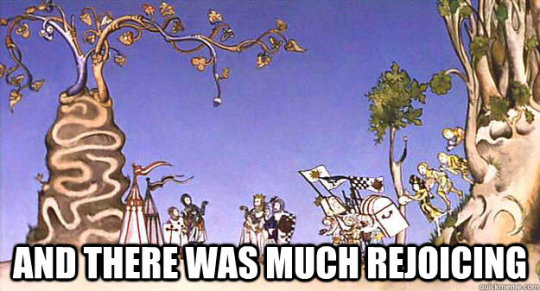
Zack and Trini, the black and yellow rangers, are the least developed members of the team, by virtue of being the last to even show up in the movie. Not that they lack personality, mind you. If anything, them being a little harder to decipher feels intentional, since Zack stays out of school to take care of his sick mother, and Trini is "the new girl" (who's been here a year, but that's just details) and kind of self-ostracized, in a "don't let them in, don't let them see" kind of way.
They're still both pretty enjoyable characters. Zack is the brash comic relief archetype most of the time, but seeing his sweet side with his mother was a nice addition to the trope (also, having him speak Chinese, I approve). Trini is implied to be some shade of not straight, although I think the cries of "yellow ranger is gayyyy" were a bit exaggerated. More importantly, she's the one Rita chooses to go after first because she's more guarded than the others…and Trini does the right thing and ask for her team's help. Just like with Jason, it's a subdued kind of character development that I like a lot. No one goes "wow, you trust us now?" like it's some kind of grand change. She just trusts her team, and the others accept it. I like that. Also, she calls out her younger brothers' casual sexism, that's cool too.
Which leaves us with Billy, who I think is pretty unanimously the audience favorite. One, he's a black autistic guy, unambiguously so, which is already pretty rare. Two, his autism actually feels…you know, real. It's consistent, it shows itself in symptoms that make sense, but it also doesn't define all of Billy's character. His interests are his own, even if they express differently because of his autism. And three, and perhaps most importantly, he's the group's emotional core. That's pretty groundbreaking as far as autistic characters go.
And I don't mean he's the poor autistic kid that everyone feels pity to and therefore stick together to help—he's an active participant in it. He's the one who discovers the Power coins and gets several of the other protagonists involved (he definitely brought Jason, attracted Zack's attention, and I think Trini also followed him to the quarry), he's the first to embrace that they're Rangers and a team and he's the one who works to make everyone else work together. So hey, that was nice.
As for Rita…she's a little bit of a mixed bag. First is the whitewashing issue, on which I will…choose to remain cautiously silent aside from mentioning that, yes, Rita Repulsa was originally portrayed by a Japanese woman by virtue of all her footage being dubbed over from a Japanese show, and the movie cast Elizabeth Banks as her. Make of that what you will.
She is the biggest aesthetic departure from the original, which is partly because of her retconned backstory, but frankly? I think it's probably for the best because of the aforementioned whitewashing. Maybe my standards are low, but at least she's not trying to pretend like she is Machiko Soga at all. If you get my drift. And if you don't: I mean Hollywood loves to pass white people as Japanese (or other Asian ethnicities).
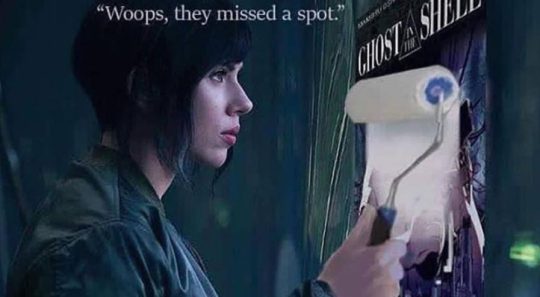
Far from me to claim I have a final say on this issue, of course.
But as a character on her own, I actually liked her a lot. She felt threatening in a way show!Rita never really did, probably because, you know, she actually does things instead of staying cozy on the moon and sending monsters to do her work. They established her powers more clearly, which is good, because rules means we know what she can do and we can feel the threat she poses, instead of having her pull random shit at us.
And yet, in spite of having a more threatening villain (including her underlings) and higher stakes (i.e. world annihilation, more or less), the movie manages to retain its light tone I previously mentioned. Which is…hit or miss (the very first present-day scene includes a particularly tasteless joke, if you ask me), but it's still less cringey than the original show, while keeping with its spirit.
So overall, I'd say the Power Rangers movie is a pretty successful adaptation. If we must keep readapting everything in the name of nostalgia, I hope we get more work like this. I wouldn't be too optimistic about it, though.
#power rangers#power rangers 2017#movie#movies#review#reviews#movie review#movie reviews#st: movie reviews
8 notes
·
View notes